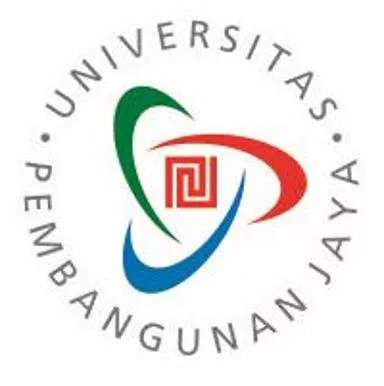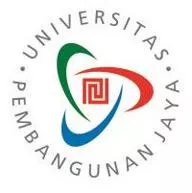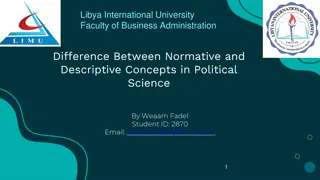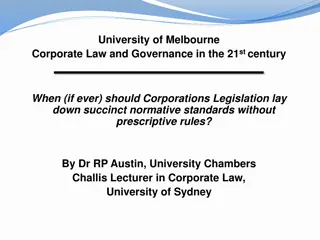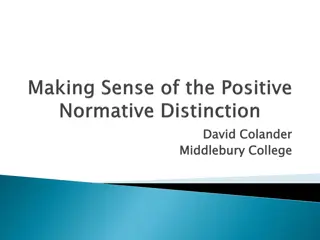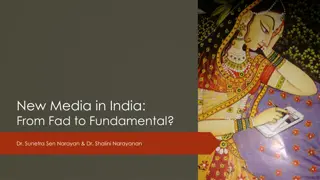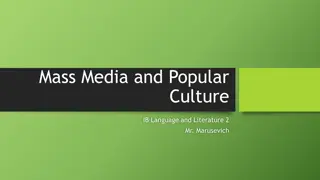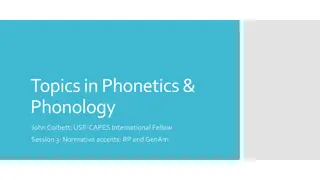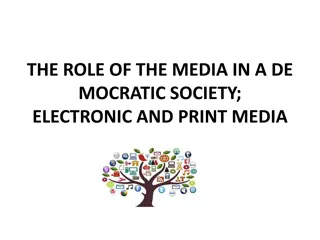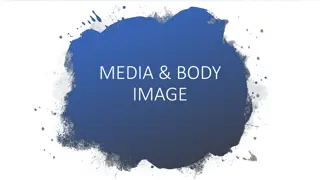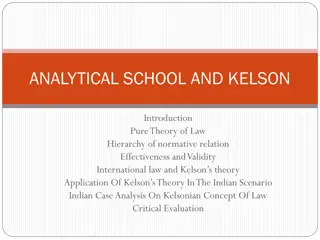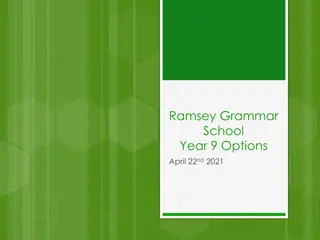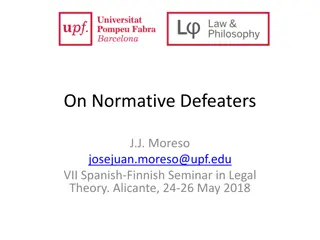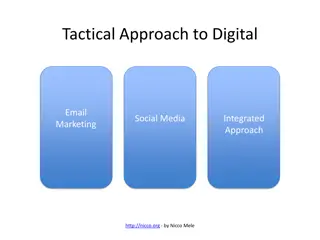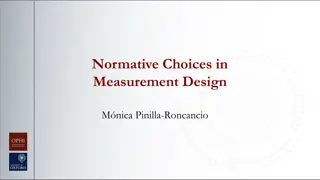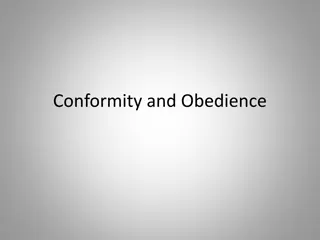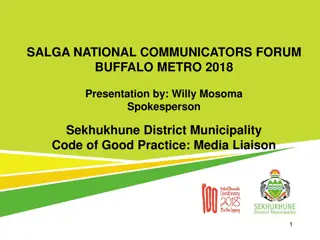Normative Theory of Media and Society
Normative theory refers to the ideas of right and responsibility underlying expectations from media for the benefit of individuals and society. It emphasizes the media's organization and behavior in the public interest, historically tied to democratic institutions. Sources of normative expectations include social and political theories, journalism practices, public opinion, media market, state agencies, and societal stakeholders. Main public interest criteria for media structure include high-quality content, freedom of publication, support for public order, diversity, and respect for human rights. Social responsibility theory asserts that the media have obligations to society as a public trust, highlighting truthful, fair, and self-regulated news media practices with government intervention when necessary.
Download Presentation

Please find below an Image/Link to download the presentation.
The content on the website is provided AS IS for your information and personal use only. It may not be sold, licensed, or shared on other websites without obtaining consent from the author. Download presentation by click this link. If you encounter any issues during the download, it is possible that the publisher has removed the file from their server.
E N D
Presentation Transcript
Media Structure, Economics and Global Komunikasi Massa Program Studi Ilmu Komunikasi Universitas Pembangunan jaya
Normative Theory of Media and Society
Normative Theory refer to the ideas of right and responsibility that underlie these expectations of benefit from the media to individuals and society. the media ought or are expected to be organized and to behave in the wider public interest or for the good of society as a whole the most fundamental source are stem from the historical context that has shaped the role of the media institution. This has meant a close link between democratic political institutions and the role of the media as carrier of news and former of opinion.
Sources of normative expectations from media Social and political theory on the press Professional theory and practice of journalism The public as citizens (public opinion) The public as audience The media market The state and its agencies Interested parties in the society affected by media
Main public interest criteria for media Structure Content High quality of information and culture Freedom of publication Supportive of public order and the law Plurality of ownership Diversity of information, opinion and culture Extensive (near universal) Avoiding harm to society and individuals Diversity of channel and form Respectful of international obligations and human rights Supportive of the democratic political system (public sphere)
Social responsibility theory: main propositions The media have obligations to society, and media ownership is a public trust News media should be truthful, accurate, fair, objective and relevant The media should be free, but self-regulated The media should follow agreed codes of ethics and professional conduct Under some circumstances, government may need to intervene to safeguard the public interest
Most frequently found principles in journalistic codes Truthfulness of information Clarity of information Defence of the public s rights Responsibilities in forming public opinion Standards of gathering and presenting information Respecting the integrity of the sources
Media Structure and Performance: Principles and Accountability
Main public benefits of media freedom Systematic and independent public scrutiny of those in power and an adequate supply of reliable information about their activities (this refers to the watchdog or critical role of the press) Stimulation of an active and informed democratic system and social life Opportunities to express ideas, beliefs and views about the world Continued renewal and change of culture and society Increase in the amount and variety of freedom available
Media Economics and Governance
Media Not Just Any Other Business The key to the unusual character of the media institution is that its activities are inextricably both economic and political as well as being very dependent on continually changing technologies. These activities involve the production of goods and services which are often both private (consumption for individual personal satisfaction) and public (viewed as necessary for the working of society as a whole and also in the pub-lic domain). The public character of the media derives mainly from the political func-tion of the media in a democracy, but also from the fact that information, culture and ideas are considered as the collective property of all. Nor, as with other public goods, such as air and daylight, does their use diminish their availability for others
Media ownership and control Freedom of the press supports the rights of owners to decide on content Form of ownership inevitably has an influence on content Multiplicity of ownership and free competition are the best defence against misuse of powers of ownership There are usually checks and balances in the system to limit undesirable owner influence
Horizontal versus vertical concentration pattern of ownership which extends through different stages of production and distribution (for instance, a film studio owning a cinema chain) or geographically (a national concern buying city or local newspapers Vertical concentration mergers within the same market (for example, of two competing city or national newspaper organizations or of a telephone and a cable network) Horizontal concentration
Causes of media globalization More powerful technologies for long-distance transmission Commercial enterprise Follow-on from trade and diplomatic relations Colonization and imperialism, past and present Economic dependency Geopolitical imbalances Advertising Expansion of telecommunications
The Media Transnationalization Process
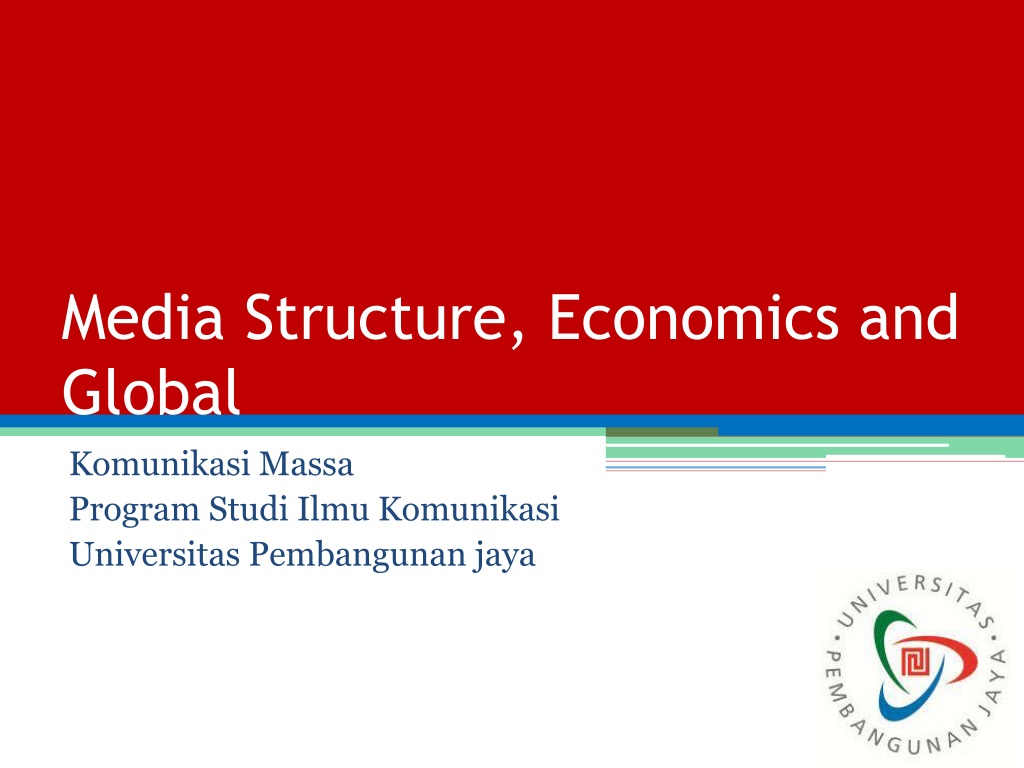
 undefined
undefined










